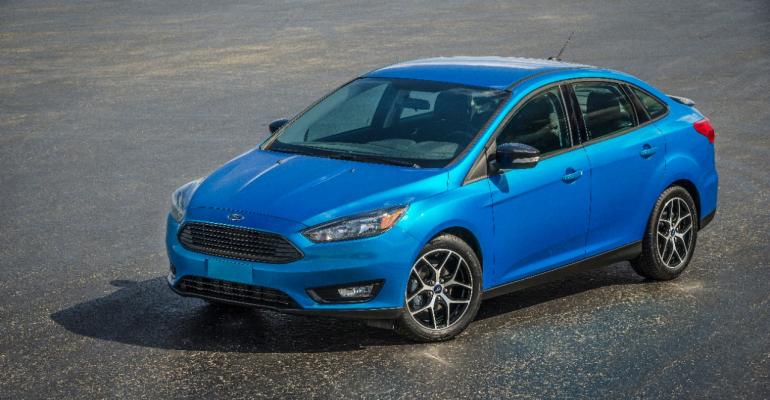DETROIT – Ford is sticking to its guns when it comes to fielding a full product lineup despite a slump in car sales.
Joe Hinrichs, president-The Americas, says the automaker’s car deliveries, particularly small cars, have suffered because of the recent drop in gasoline prices and the growing popularity of CUVs and SUVs.
In December, Ford Focus and Fiesta sales dropped 7.4% and 20.0%, respectively, according to WardsAuto data. For full-year 2014, the two models’ U.S. deliveries slipped 6.5% and 11.0%.
“SUVs were growing before gas prices fell. They’ve been hot globally for quite some time and will continue to be hot,” Hinrichs says at the Automotive News World Congress here. “The small-car segment has been declining for quite some time, and we’ve seen the acceleration of that in the second half of the year because of fuel prices primarily. We will keep an eye on that.”
Small cars are suffering not only from slowing sales, but also from lower average transaction prices, Hinrichs says.
“If you break it down, truck and SUV ATPs were up. In the small-car segment, ATPs came down,” he says. “That was happening even before we saw the most recent dramatic drop in gasoline prices. With interest levels and demand for SUVs high and fuel prices low, the car market is feeling some of that pressure.”
While the trend toward CUVs and SUVs, particularly small and midsize models, is expected to continue, Hinrichs says Ford expects fuel prices to rise in the future, a sentiment shared by consumers, according to the automaker’s research.
The Ford Edge midsize CUV, despite being in a hot segment, had a difficult year in 2014, with deliveries falling 15.6%.
Hinrichs says the Edge’s decline is due not to waning demand, but rather an issue at the Oakville, ON, Canada, assembly plant where the CUV is built.
“In 2014 we introduced new equipment into the Oakville body shop to get ready for the launch of new vehicles, and between ourselves and our suppliers we had some production interruptions and lost some volume,” he says.
Ford’s global product strategy, which focuses on sharing platforms among multiple vehicles, receives a shot in the arm with the announcement the automaker will whittle its global platform count down to eight. Ford previously announced it would trim the number of platforms to nine by 2016.
Hinrichs declines to reveal which platform will be eliminated, but says the reduction strategy is paying dividends for the automaker.
“It’s an opportunity for us in the next generation of vehicles to get even more volume for ourselves and our supply base on fewer platforms,” he says.
Ford has been garnering much attention for its move to switch the F-150 pickup to an aluminum body, but Hinrichs says the lightweight material doesn’t make that much sense for cars.
“Aluminum has a place in cars, but not the same kind of place,” he says. “One of the benefits you get on trucks is more capability; you don’t get those same benefits on the car side. So I don’t think we will see a dramatic increase in all-aluminum cars.”





